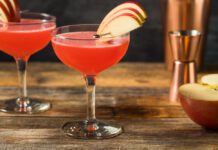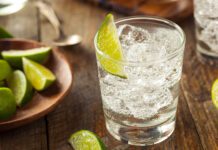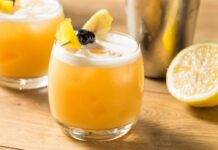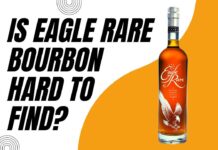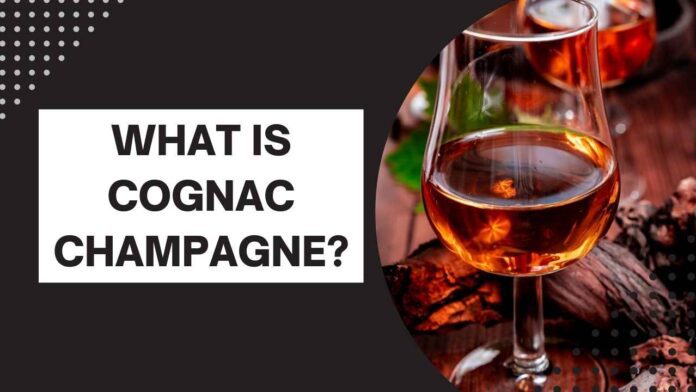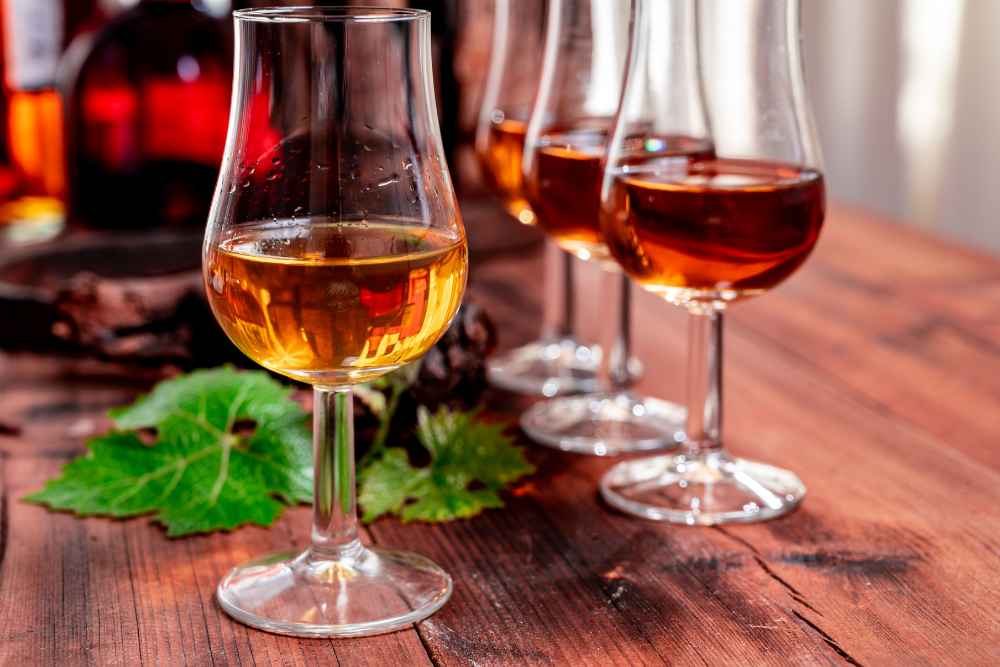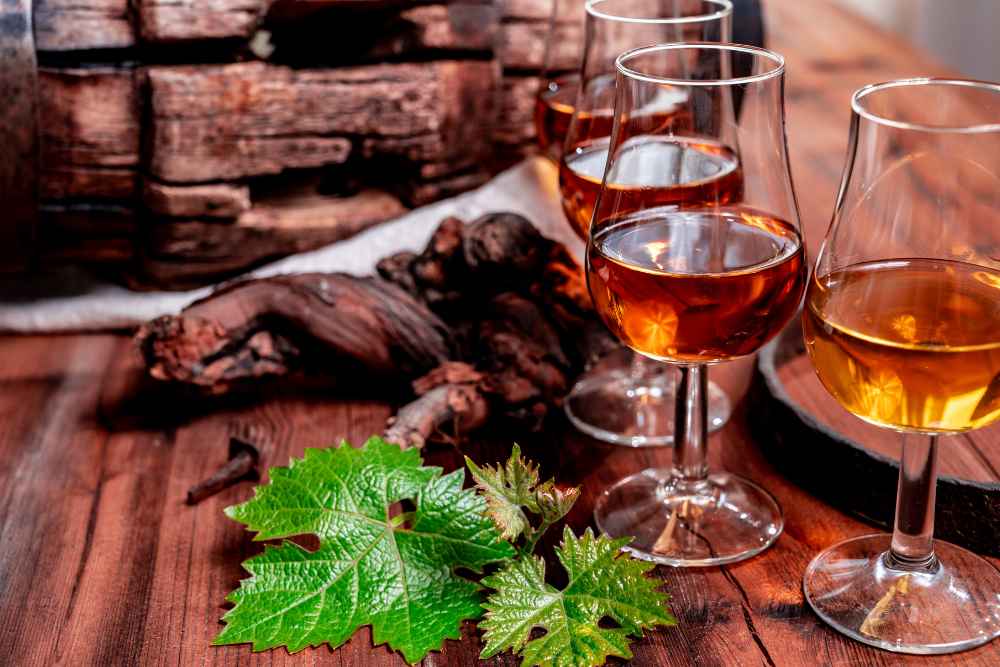This page may contain affiliate links. Please see our Disclaimer for more information. Always drink responsibly and adhere to your local legal drinking age.
Introduction To Cognac Champagne
When it comes to indulging in luxurious spirits, Cognac Champagne represents the epitome of elegance and refinement. But what exactly sets this fine brandy apart from its counterparts? In this comprehensive guide, we’ll dive into the world of Cognac Champagne, exploring its unique qualities, rich history, and how to savor every last drop.
So sit back, pour yourself a glass if you have one handy, and join us on this flavorful journey through the esteemed realm of Cognac Champagne.
Key Takeaways:
- Cognac Champagne is a brandy made using distilled white wine and aged in oak barrels for an extended period, resulting in a rich and complex flavor profile.
- The age classification of Cognac Champagne (VS, VSOP, XO) indicates the brandy’s quality and age based on how long it has been aged in oak barrels. Older cognacs tend to be darker and more complex than younger ones.
- Terroir plays a crucial role in determining the quality and value of Cognac Champagne by influencing grape cultivation and ultimately affecting both flavor and aroma. The Grande Champagne region often yields more valuable eaux-de-vie due to its higher-quality chalky soils that impart delicate floral notes into the final product.
- To properly enjoy Cognac Champagne, use tulip-shaped glassware, serve at room temperature or slightly warmed up, and savor its notes of oak, vanilla, and fruit flavors while pairing it with cheese or chocolate for an elevated experience.
Understanding Cognac Champagne
Cognac Champagne is a specific type of brandy made using distilled white wine aged in oak barrels, with the resulting concoction being rich and complex.
The Differences Between Brandy, Champagne, And Cognac
To understand the key distinctions between brandy, champagne, and cognac, it’s essential to recognize their origin, production process, and base ingredients. The following table highlights the differences between these three beloved spirits to enhance your knowledge and appreciation of each:
| Type of Beverage | Origin | Base Ingredient | Production Process |
|---|---|---|---|
| Brandy | Worldwide | Fruit-based, most commonly grapes | Distilled from fruit wine or fermented fruit juice, aged in oak barrels |
| Champagne | Champagne region, France | Grapes (Pinot Noir, Chardonnay, and Pinot Meunier) | Double fermentation, with second fermentation occurring in the bottle |
| Cognac | Cognac region, France | Ugni Blanc grapes | Double-distilled and aged in French oak barrels, made according to strict criteria |
While each spirit has unique characteristics, they share a rich history and passion for quality and craftsmanship. As a cocktail drinker, understanding these differences allows you to appreciate better the complexity of flavors and the art of mixing diverse ingredients to create a truly exceptional drinking experience.
The History And Production Process Of Cognac
The rich history of cognac can be traced back to the 16th century when Dutch merchants introduced the process of distilling wine to France. This gave birth to a new type of spirit called “brandewijn,” which later evolved into brandy.
Producing top-notch cognac is an intricate process that requires both artistry and precision. The journey begins with handpicked Ugni Blanc grapes from France’s prestigious Grande Champagne or Petite Champagne regions.
Cognac’s unique character comes from its extensive aging process inside oak barrels. Master blenders keep watch over these barrels while carefully blending eaux-de-vie from different ages to ensure consistency and complexity in taste profiles.
The Importance Of Terroir In Cognac Champagne
The significance of terroir in Cognac Champagne production cannot be understated, as it plays a crucial role in determining the quality and value of the resulting spirit.
Terroir refers to the unique combination of soil, climate, and geography within specific regions that influence grape cultivation, ultimately affecting both flavor and aroma in Cognac.
Cognac producers like Rémy Martin recognize this importance by carefully selecting grapes from different crus, including Grande Champagne and Petite Champagne areas known for their excellent terroirs, which contribute distinct characteristics to each batch.
This dependency on terroir is also evident at Frapin – a Cognac house committed solely to producing fine brandy from its vineyards featuring prime growing conditions.
Types Of Cognac Champagne And Age Classification
Cognac Champagne has three age classifications: VS (Very Special), VSOP (Very Superior Old Pale), and XO (Extra Old).
VS (Very Special), VSOP (Very Superior Old Pale), And XO (Extra Old)
Cognac is classified into three different age categories: VS (Very Special), VSOP (Very Superior Old Pale), and XO (Extra Old). These age classifications indicate the quality and age of the brandy, which are determined by how long the brandy is aged in oak barrels. Here are some essential facts to know about each classification:
- VS (Very Special) – This stands for “Very Special” and requires at least two years of aging. The resulting spirit is light and fruity with a subtle vanilla nose.
- VSOP (Very Superior Old Pale) – This requires at least four years of aging, resulting in a more complex spirit with hints of spice, chocolate, and oak.
- XO (Extra Old) – This requires a minimum of six years of aging and results in an incredibly smooth and rich spirit with leather, tobacco, and dried fruit notes.
The longer the cognac is aged in oak barrels, the deeper its color becomes. As a result, older cognacs tend to be darker than younger ones. It’s worth noting that while these classifications can give you an idea of what to expect from a particular bottle, they aren’t always indicative of quality. It’s important to try different brands and styles to determine your personal preferences.
Aging And Blending Techniques In Cognac Champagne
The aging and blending of Cognac Champagne play a vital role in its flavor profile. In production, eaux-de-vie from different years and vineyards are blended to create a consistent flavor.
This is called “marriage,” it can take years to achieve the desired blend. Aging occurs in oak barrels, which must be made of French oak from certain forests, including Tronçais, Limousin, Allier, and Jupilles.
The older the barrel used for aging cognac champagne, the fewer oak flavors it adds to the spirit.
The age classification is also crucial in determining flavor intensity and complexity in cognacs; VS grade means “very special” aged at least two years and has light floral notes, while VSOP (Very Superior Old Pale) means “very superior old pale” and aged between 4-10 years offering more rounded vanilla tones with nutty accents.
Cocktail drinkers who want to enjoy Cognac Champagne should look for those famous brands like Rémy Martin produce fine champagne cognacs such as Louis XIII Grand Champagne Cognacs that are worth checking out due to their unique blends made through an elaborate marriage system involving eaux-de-vie up 100 plus-year-old grapes selection covering multiple regions within both Grande & Petite Champagne where only each top tier batch are chosen carefully by some of the industry’s most experienced taste makers ensuring perfect balance every time you treat yourself with this legendary drink.
The Significance Of Age Classification
The age classification is essential for cognac as it tells you how long the eaux-de-vie, or brandy, has been aged in oak barrels. The longer the cognac ages in a barrel, typically made of French oak from Limousin or Tronçais forests, the more complex and smooth its taste becomes.
Aging also imparts flavors such as vanilla, caramel, and dried fruit to the drink.
It’s worth noting that age statements differ among producers, so read closely when selecting a bottle of Cognac Champagne. For example, VS (Very Special) means that cognac is at least two years old. In contrast, VSOP (Very Superior Old Pale) indicates four years of aging minimum on average across all barrel-age batches used to create the final blend.
How To Properly Enjoy Cognac Champagne
To properly enjoy Cognac Champagne, use a tulip-shaped glass to enhance the aroma, serve it at room temperature or slightly warm up, and savor its oak, vanilla, and fruit notes.
Glassware, Serving Temperature, And Tasting Notes
When enjoying cognac champagne, it’s essential to consider the glassware, serving temperature, and tasting notes for a full sensory experience. Here are some tips:
- Glassware: A tulip-shaped glass is ideal for tasting cognac, allowing the aromas to concentrate toward the nose. The glass should be large enough to allow ample space for swirling and examining color.
- Serving temperature: Cognac should be consumed at room temperature, around 18-20°C. It should not be heated as this destroys the flavors.
- Tasting notes: When sipping cognac champagne, note its aroma, color, taste, and texture. The fragrance may be floral or fruity, with hints of woodsy notes from aging in oak barrels. Depending on age, the color can range from pale gold to dark amber. Taste can vary widely depending on age and blend, but expect flavors such as vanilla, honey, spice, or nuttiness with a long finish.
Enjoying cognac champagne requires time and attention to detail, but when done right can result in a delightful experience worth savoring.
Keywords: glassware, serving temperature, tasting notes, tulip-shaped glass, aroma, color, taste, texture
Food Pairings With Cognac Champagne
Cognac is a classic drink that goes well with a variety of foods. Here are some excellent food pairings to try with your Cognac Champagne:
- Cheese: Fatty cheese like Brie or Camembert pairs best with VSOP Cognac, while aged cheese like Roquefort or Gorgonzola go well with XO Cognac.
- Chocolate: Dark chocolate is an excellent complement to the rich flavors of XO Cognac.
- Fruit: Candied fruits and figs work well with VSOP and XO Cognacs.
- Nuts: Walnuts, hazelnuts, and almonds are delicious complements to the nutty flavors of VSOP Cognacs.
- Seafood: Smoked salmon or shellfish pair well with VSOP Cognacs due to their light, delicate flavors.
- Asian cuisine: Spicy dishes like Chinese stir-fry or spicy Indian food can be balanced by the sweetness of a VSOP or XO Cognac.
So now you know some delectable food pairings to enjoy with your favorite glass of Cognac Champagne!
Popular Brands And Producers Of Cognac Champagne
Hennessy, Rémy Martin, Martell, and Courvoisier are some of the most well-known producers of Cognac Champagne.
Rémy Martin, Hennessy, Martell, Courvoisier, And More
Rémy Martin is one of the most famous Cognac brands, and it exclusively produces Cognacs from the Grande Champagne and Petite Champagne subregions of the Cognac region. Other top brands include Hennessy, Martell, and Courvoisier. These brands are often compared and debated for their quality and price due to their distinct blends and age classifications.
- Hennessy has a range of Cognacs that vary in age classification, including VS (Very Special), VSOP (Very Superior Old Pale), and XO (Extra Old). Their VSOP Privilege blend, aged between 4-15 years, is a popular choice for cocktails.
- Martell’s signature blend is their Cordon Bleu, which includes eaux-de-vie aged 10-25 years. They also produce L’Or de Jean Martell, a premium blend from over 400 eaux-de-vie.
- Courvoisier’s blends include VS, VSOP, and XO classifications. Their XO Imperial blend is aged up to 35 years and has notes of vanilla, cocoa, and dried fruit.
- Other top producers in the Cognac region include Hine, Frapin, Camus, and Delamain. Each brand offers unique blends with varying levels of complexity.
Cocktail drinkers looking for high-quality ingredients for their drinks can trust these top Cognac brands to provide unique flavor profiles.
Overview Of The Different Producers In The Region
Cognac Champagne is produced by various houses, each with its distinct styles and flavors. The most popular brands include Rémy Martin, Hennessy, Martell, Courvoisier, and more.
These cognac producers have been creating some of the finest spirits in the world for centuries. They carefully select grapes from the region’s best vineyards to ensure they produce high-quality products.
Each producer has unique processes and methods for aging and blending Eaux-de-vie to achieve different flavor profiles.
In conclusion, various producers in the cognac champagne region cater to different taste preferences.
FAQ
Q: What is Cognac Champagne?
A: Cognac Champagne is a type of fine champagne cognac. It is made from grapes grown in the Cognac region of France, Grande Champagne, and Petite Champagne.
Q: What makes cognac different from other types of brandy?
A: Cognac is made using specific methods, and grapes are grown in designated growing regions in France. The resulting eau-de-vie is then aged in oak barrels and blended to create a unique and complex flavor profile.
Q: What are the different growing regions for cognac?
A: The Cognac region is divided into six different growing parts: Grande Champagne, Petite Champagne, Borderies, Fins Bois, Bons Bois, and Bois Ordinaires.
Q: What is the difference between Grande Champagne and Petite Champagne?
A: These two growing regions are considered the finest and produce the highest quality grapes for cognac production. Cognacs labeled as “Grande Champagne Cognac” must be made from at least 50% of the grapes grown in that region. Cognacs labeled as “Petite Champagne Cognac” must be made from at least 50% of the grapes grown in that region.
Q: Can cognac be made from grapes grown outside the Cognac region in France?
A: No, for a brandy to be called “cognac,” it must be made from grapes grown in the designated region of Cognac, France.
Q: Can cognac be made from champagne grapes?
A: No, cognac must be made from specific grape varieties grown in France’s Cognac region, not champagne grapes.
Q: What is the process for making cognac?
A: Cognac is made by fermenting and distilling specific grape varieties to create eau-de-vie, which is then aged in oak barrels for at least two years. The resulting aged eau-de-vie is then blended to create a final cognac product.
Q: What is the difference between cognac and champagne?
A: Cognac is a type of brandy made from grapes grown in the Cognac region of France, while champagne is a type of sparkling wine made from grapes grown in the Champagne region of France. The word “champagne” describes both the wine and the region of origin.
Q: What is the difference between “champagne cognac” and “fine champagne cognac”?
A: The terms “champagne cognac” and “fine champagne cognac” both refer to cognac produced using grapes from the Grande Champagne and Petite Champagne regions. However, cognacs labeled “fine champagne” must be made with at least 50% grapes from the Grande Champagne region.
Q: What cognac house is known for producing high-quality cognacs?
A: Remy Martin is a cognac house known for its high-quality cognacs, including “Fine Champagne Cognac” blends.
Q: What is the Bureau National Interprofessionnel du Cognac (BNIC)?
A: The BNIC is an organization that oversees the production and marketing of cognac in France. It is responsible for regulating the designation of origin and ensuring that all cognac produced in the region meets specific quality standards.
Conclusion And Recommendations For Trying Cognac Champagne
In conclusion, Cognac Champagne is a fine brandy that should be savored and enjoyed. It’s rich history and production process sets it apart from other spirits.
When trying Cognac Champagne for the first time, start with a VS or VSOP classification before venturing into XO. Remember to serve it in appropriate glassware at the recommended temperature while pairing it with food for an elevated experience.
Some popular brands include Rémy Martin, Hennessy, Martell, and Courvoisier.



